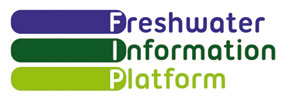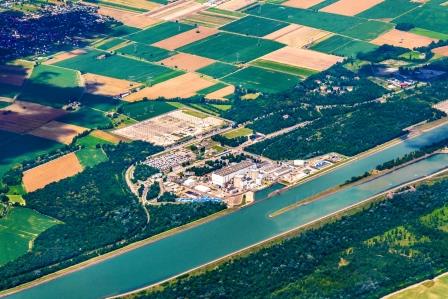Abstraction and Flow Diversion
Humans require water for most aspects of our lives: for growing food, raising animals, drinking, eating, manufacturing, washing and so on. As a result, demands for water abstraction from surface and groundwaters are growing every year, as the global population increases and Earth’s climate changes (UN 2016).
Over-abstraction of water resources often leads to water scarcity, reduced or intermittent river flows, lowered lake and groundwater levels, the drying up of wetlands, and reductions in water quality as pollutant concentrations are increased. In coastal regions, over-abstraction from groundwater aquifers can lead to the intrusion of saline water from the sea, diminishing water quality and compromising their ongoing use. Each of these state changes brings impacts such as intermittent flows and reductions in aquatic biodiversity and ecosystem service provision – particularly in the provision of drinking water.
In Europe, around 13% of all accessible freshwater from natural surface waters and groundwater is abstracted (EEA 2015). The drivers responsible for water abstraction pressures in Europe are energy production (44% of total abstraction), agriculture (24%), public water supplies (21%) and industrial purposes (11%) (however there are strong regional variations; see Geographical distributions and trends, EEA 2009). Abstraction can be renewable or non-renewable (e.g. groundwaters, which can take years to recharge); and the water used either with-return (e.g. energy production; can bring risk of pollutants or temperature alterations) and without-return (e.g. agriculture, where water is used in crop or cattle growth).
Pressure types
There are a number of abstraction and flow diversion pressures generated by different drivers:
Agriculture
Irrigation - water is used primarily for irrigation in agricultural processes, particularly in regions which are already water scarce (e.g. the Mediterranean). In some cases, farmers will divert and store water flows into canals and reservoirs, altering the quantity, and timing of downstream environmental flows (EEA 2009). At a larger scale, there can be inter-basin water diversions for agricultural abstraction, for example on the Tagus-Segura system in Spain (WWF 2007).
Urban Development
Public water supplies - urban populations require significant quantities of water for drinking, washing and cleaning. Demands may fluctuate seasonally in regions with high tourism (which in Southern Europe are often already water scarce) due to influxes of visitors increasing water demands (EEA 2015).
Energy
Cooling water - thermal, fossil and nuclear power plants all require large amounts of water for the generation of electricity and heating, the majority of which is subsequently returned (post-treatment) to the abstracted water body (EEA 2009).
Industry
Industrial water - is a key resource in many industrial manufacturing processes: used for cleaning, heating and cooling; to generate steam; to transport dissolved substances or particulates; and as a raw material (EEA 2009).
Aquaculture
Fish farming - aquaculture processes often require the abstraction (or at least, interchange) of water from surrounding water bodies.
Geographical distributions and trends
Water abstraction has declined in both Western and Eastern Europe since the early 1990s; stayed constant in Southern Europe; but significantly increased in Turkey over the same period (EEA 2015). Despite these declines, the total European demand for abstraction has still exceeded 200 million m³ of water in recent years (EEA 2015).
There are strong regional differences in the drivers for water abstraction across Europe. In Southern Europe, agriculture is responsible for more than half of total water abstraction (more than 80 % in some regions), whilst in Western Europe, more than half of abstracted water is used in energy production, although water is returned after hydropower use (EEA 2009). In Southern Europe, abstraction for irrigation allows for agriculture to take place where natural water availability would otherwise be a limiting factor. As a result, abstraction is a significant environmental pressure in the region, which is forecasted to be exacerbated by climate change in coming years (EEA 2015).
There are also strong sectoral differences in the quantity of abstracted water subsequently returned to the water body: where almost 100% of water used in energy production is returned; the figure for agriculture is only around 30%, as a result of losses to evaporation and crop growth (EEA 2009).
Stressors generated
The primary stressors generated by abstraction pressures are hydrological, in terms of the changes to quantity, quality and timing of water flows in aquatic ecosystems. Where water flows are diverted and stored (e.g. in canals and reservoirs for agriculture), morphological stressors may be generated. When used for cooling the returning water has elevated temperature and causes thermal stress. Water scarcity and water use in energy and industrial systems may also generate chemical (e.g. increase in pollutant concentrations), thermal (e.g. low water levels are liable to heat up quickly) and biological (e.g. the loss of ecological habitats) stressors.
Potential for mitigation
A key strategy for mitigating water abstraction pressures is to promote more efficient water use across sectors to reduce demand. In the public water supply, water-efficient domestic and commercial appliances (e.g. washing machines) may be incentivised by governments, leakages and misconnections in urban plumbing networks fixed, and public awareness schemes about efficient water use implemented. Water pricing – tied to the volume of water consumed (e.g. through metering) – may also be used to help mitigate abstraction pressures – both from public water and agricultural demands – and links to the Water Framework Directive's requirement that the pricing of water services reflect their full environmental costs (EEA 2009, 2012).
Further reading
Reports and publications:
EC (2007). Drought Management Plan Report: Including Agricultural, Drought Indicators and Climate Change Aspects (Download report, 3.1mb)
EEA (2009). Water resources across Europe — confronting water scarcity and drought (External website)
EEA (2012). Towards efficient use of water resources in Europe (Download report, 3.83mb )
EEA (2015). The European Environment - State and Outlook 2015 - Urban Environment - Synthesis Report (Download report, 15.8mb)
UN (2016). World Water Development Report 2016 (Download document, 19mb)
WWF (2007). Pipedreams - Interbasin water transfers and water shortages (Download document, 1.39mb)
Selected Freshwater Blogs:
Freshwaterblog (2017). Lake Restoration and Management in a Changing Climate (External website)
Freshwaterblog (2017). Largest freshwater Mediterranean lake may dry out in this century due to climate change and abstraction (External website)
Freshwaterblog (2015). Low water and high salinity: the effects of climate change and water abstraction on lake ecosystems (External website)







